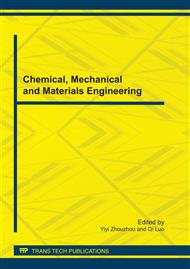p.29
p.35
p.43
p.48
p.53
p.59
p.65
p.71
p.77
A New Rough Machining Approach for a Ruled Surface Impeller
Abstract:
In order to improve the efficiency of integrated impeller rough machining and make up the deficiency of commercial computer aided manufacturing (CAM) software in five-axis plunge milling, a ruled surface impeller plunge milling method was presented. Boundary vectors were generated according to an impeller’s ruled surface blade. Quaternion interpolation algorithm was used to interpolate cutter axes according to these boundary vectors. The computing formula of row spacing and stepover are deduced to ensure high material removal rate and machining efficiency. Hub surface and a blade finishing cutting path were also generated. Based on the algorithm, an integrated special impeller plunge milling CAM software was independently developed. The generated cutting path was simulated and also carried out practically. Simulation and experimental results show that this method improves the efficiency of impeller parts rough machining to a certain extent.
Info:
Periodical:
Pages:
53-58
Citation:
Online since:
July 2011
Authors:
Keywords:
Price:
Сopyright:
© 2011 Trans Tech Publications Ltd. All Rights Reserved
Share:
Citation:


